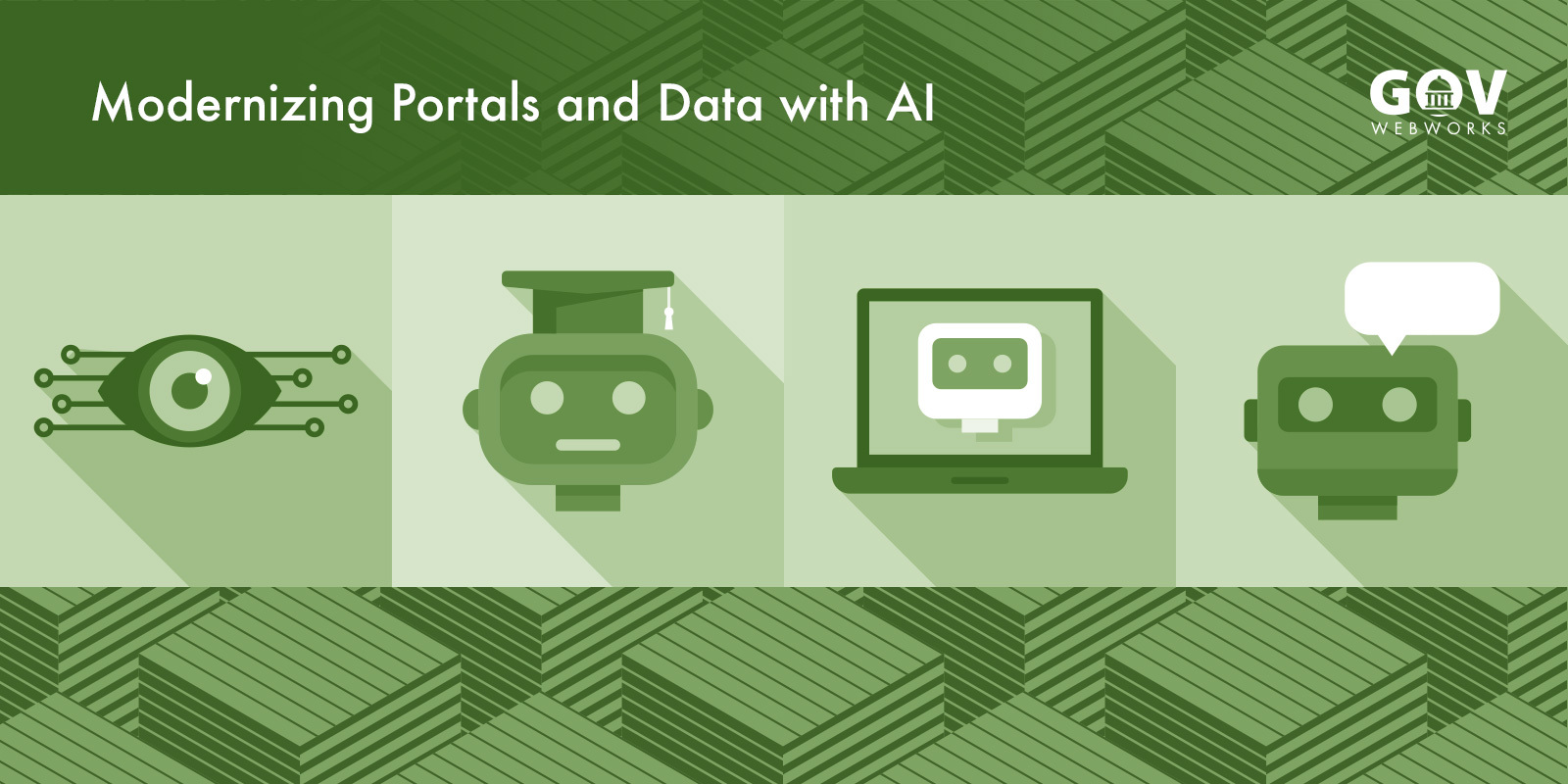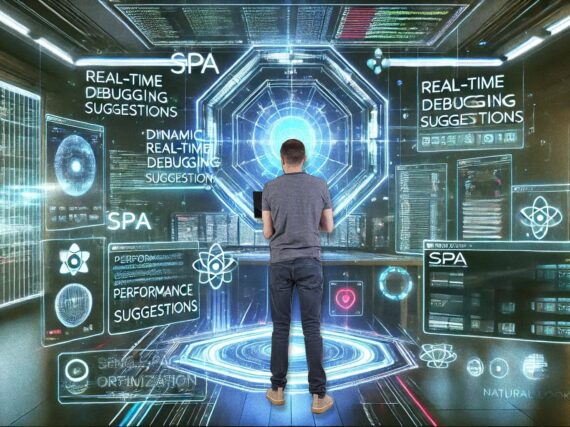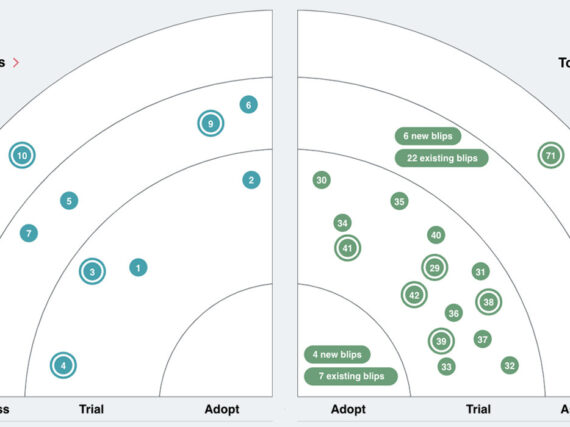As we adjust to life after the recent Covid-19 outbreak, we’re taking stock of what has changed. How we interact now is exposing how reliant we are on effective technology. This is especially true for the public sector. During the peak of the crisis, many government programs struggled to keep up with the surge in demand. However, now that the initial crisis has passed, I would urge departments to take stock of their systems so they can modernize to meet the demands of future events.
Citizens want more efficient, transparent, and personalized online service discovery and delivery. Yet, many departments are trying to provide exceptional service using outdated technologies. It is an understatement to say that they are under extreme pressure to find effective solutions. And worse still, because government budgets are under pressure, these challenges are being met with fewer resources.
Agencies can’t simply buy their way out of this situation. Furthermore, replacing whole systems takes too long to procure and implement. So what can departments do to keep up during this time of need?
Technologies of the future (now)
Now may be the time to embrace (what used to seem like) technologies of the future. One of the most promising technologies forward-looking departments are deploying is artificial intelligence (AI). Not humanoid robots, but more common uses of this technology. One such example is the AI embedded into many websites. It combines a collection of technologies that use data, algorithms, and computing power to make sense of large amounts of data.
AI actually impacts our daily lives behind the scenes to make the things we do a little easier without us even knowing. It helps our cars to drive more safely and efficiently, our phones to take better pictures, and our online search results to be more precise. For years it seemed like AI belonged to the realm of science fiction, but there are now some simple tools that departments can implement immediately.
These tools can perform onerous or time-consuming tasks previously done by department staff. The following enhancements to a department website are a good place to start:
- Portal Automation: AI can help improve the user experience, streamline navigation, ensure accessibility, and automate application/approval processes.
- System Integration: Better connected systems allow AI to make sense of increasingly larger and more complex data sets.
As noted in our last post on AI Solutions for Government, GovWebworks has launched an AI Lab “to help government agencies prototype, test, and implement AI technologies to augment products and services.” What follows are some details on how these technologies can be used.
Automating services on public portals
Departments may be wondering how to provide value given the overwhelming demands being put on them. One option is to adopt more dynamic, and user friendly interfaces for online portals. These portals can be anything from a service discovery site like Live Better Idaho or the NH Doorway, or the landing page for a specific program, such as SNAP benefits.
Recommendation engines
We’re all familiar with content providers like Netflix or Hulu that rely on AI to present user-specific information. Departments could mimic the Netflix format by using tiles to recommend different programs and services relevant to each user profile.
Like Netflix, departments can use AI to filter known data to provide tailored service offerings and a customized user experience. In most cases, the state already knows a significant amount of user information, as well as the ways in which users interact with government services. With this information, the department can use AI and user history to anticipate potential user needs. For instance, if a milestone birthday is coming up, a profile might recognize that the user is now eligible for Medicare. Also, if they were eligible for TANF it might alert the user that they’re also eligible for SNAP, and so forth.
Machine learning
Recommendations on design, layout, imagery, icons and even wording can be made via embedded machine learning tools. For example, machine learning can help staff build site pages based on content relevance, and recommend which components to use to showcase content better. It can also help optimize content and recommend the most effective content strategies for each audience. Machine learning takes advantage of various data sources, analytics, and user feedback mechanisms (e.g. “Did you find what you were looking for?”). This helps users to reach the content they want more effectively.
As Adam Kempler, our AI Lab director states, “the tools and software we use in everyday life are filled with little bits of friction that add up to, at best, inconvenience, and at worst, a frustrating experience. AI can help reduce friction – the friction of creating content easily and communicating with audiences, and the friction of finding content.”
Automated screening
Automated screening tools are already used to help prevent fraud, and can also be effectively used for benefits pre-screening. AI can assist with service recommendations and pre-qualification for benefits like TANF, SNAP, or Medicare. Although citizens still need to apply for these services, the process is made much easier because individuals might only need to provide verification or updates to information provided in previous applications. Applications are easier to complete, which means less need for staff to provide routine advice.
Screening could also identify potential risk factors upstream, and provide intervention and assistance to complement the social determinants of health model. Coupled with consistent and timely content, citizens would be able to navigate systems and programs more accurately, and with less friction. AI enables departments to provide this kind of tailored and accessible service with less effort.
Integrating systems and data
Most states can use both individual and aggregate data such as age, geography, economic, and other demographic information to get a better picture of the people they serve. Managing this data, and using effective AI tools will enable governments to make better-informed decisions. When departments can share data, the benefits increase.
First, the following two considerations must be addressed.
Modernization
Departments may be able to use Covid relief funds (CARES) to modernize and enhance their systems using AI tools. This will improve their systems and help streamline operations in the post-Covid world. The overall effect would be hugely beneficial and time saving.
In many cases, systems do not need to be fully replaced. Simple modernization can enable them to run more effectively. More up-to-date technology would help departmental systems to be interoperable and compatible with other departmental systems. Better connections will improve data flow, allowing for more process automation. New AI tools can also set the stage to provide a better user experience.
When AI can take some of the strain off aging systems, it can also bypass siloed decision-making processes. Obscure linkages and trends can be uncovered by using AI to analyze large, and disparate datasets. AI can then make recommendations, providing better and faster information for decision-making purposes. An example would be to use AI to improve the application process, as discussed above, and help to make determinations (like benefit eligibility) based on known or inputted data.
Data permission and security
As well as modernized tools, the use of data requires express permission from citizens, and data sharing agreements among agencies and others. Often, departments only have access to the information they need to administer their own programs and provide services. The problem is that, while each program remains separate, the onus is on the citizen to know what they are entitled to, or which questions to ask. Citizens may receive different responses from different personnel, and departments have to provide regular training to keep everyone up to date. To ensure program consistency, extra processes and safeguards are needed and this is where data tools can help.
Currently, Federal regulation, programmatic rules, and privacy concerns may prevent departments from sharing data. As a result, many programs remain siloed, making cooperation and service delivery harder. Now that the Covid crisis is transforming, it is possible that some of these rules will be relaxed. Departments can then suggest other relevant related programming to provide a more holistic service.
One solution is for data to be maintained and kept secure in a master client index. Automated processing and intelligently embedded AI can ensure that every citizen receives the same information and a consistent experience. Not only does data sharing help citizens on the front end, it also helps streamline agency operations for department staff.
It’s important to note that although AI can be a huge time saver, it will not become a game changer for departments unless used properly. Without hard-coded policy and data rules, AI increases the possibility that data can be misused, often in areas of racial and gender discrimination. We still need human oversight in the loop, and the ability for people to ask for staff intervention and assistance.
In summary
Departments will need to modernize their systems if they are to deliver services effectively in the post-Covid era. Furthermore, the troves of data that exist in large databases needs to be optimized to support departmental operations. I would encourage public sector leaders to embrace the disruption Covid has brought as an opportunity to innovate in this area.
The first step is to evaluate current systems and operational workflows, and determine the best ways to adapt and modernize to meet demands. Now is the time to look at ways to use AI tools to meet these objectives. As we are finding with our AI Lab, many departments are already benefiting from these technologies.
Our team specializes in the business analysis required to make these decisions. We urge you to take this important step toward more efficient service delivery and contact us to learn more.
Learn more
- Contact us at ai@govwebworks.com to discuss how AI/ML can deliver a better experience to your staff and audiences
- AI Solutions for Government: Our AI Lab highlights forward-thinking innovations for content management systems and software applications, Adam Kempler
- From Covid to Coordination: How states can reform operations for a better post-Covid world, by Ravi Jackson







